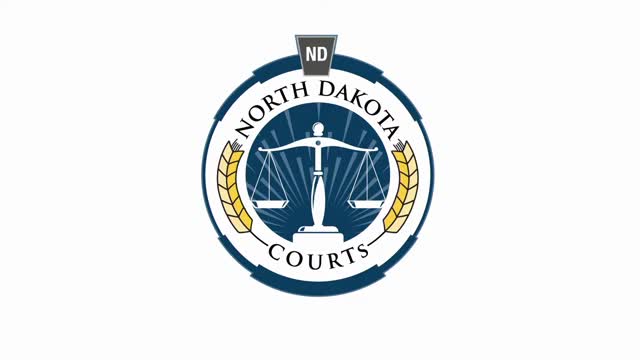North Dakota Supreme Court hears pivotal case on sentencing legality
November 13, 2024 | Supreme Court , State Agencies, Organizations, Executive, North Dakota
This article was created by AI summarizing key points discussed. AI makes mistakes, so for full details and context, please refer to the video of the full meeting. Please report any errors so we can fix them. Report an error »

In a recent session of the North Dakota Supreme Court, key procedural aspects of the court's operations were highlighted, alongside the ongoing case of State of North Dakota versus Joshua Gomez. The Supreme Court, the highest judicial authority in the state, is composed of five justices elected for ten-year terms, with the chief justice serving a five-year term. The chief justice oversees the administrative functions of the court, supported by the state court administrator and other staff.
The court's appointment process for filling vacancies was also discussed. When a vacancy arises, the governor appoints a new justice from a list provided by the judicial nominating committee. This ensures a structured approach to maintaining the court's composition.
The Supreme Court adopts various rules governing civil and criminal procedures, evidence, juvenile matters, and appellate processes, all of which are accessible on its official website. The site also features live webcasts of oral arguments, archived recordings, and a comprehensive directory of licensed lawyers in North Dakota, along with resources for navigating the judicial system.
During the session, the court heard arguments in the case of Joshua Gomez, represented by attorney Kira Krausepar. The central issue at hand was whether the district court had imposed an illegal sentence. The justices, including Lisa Fair McEvers, Jared Tufte, Douglas Barr, and John Jensen, were present, while Justice Daniel Prothers participated in the decision remotely due to an unavoidable absence.
Oral arguments are typically scheduled throughout the day, with each session allowing for 50 minutes of discussion. However, no decisions are rendered immediately; the court takes cases under advisement and issues written opinions within weeks. The public can subscribe to receive updates on new opinions and court news via email, ensuring transparency and accessibility in the judicial process.
The court's appointment process for filling vacancies was also discussed. When a vacancy arises, the governor appoints a new justice from a list provided by the judicial nominating committee. This ensures a structured approach to maintaining the court's composition.
The Supreme Court adopts various rules governing civil and criminal procedures, evidence, juvenile matters, and appellate processes, all of which are accessible on its official website. The site also features live webcasts of oral arguments, archived recordings, and a comprehensive directory of licensed lawyers in North Dakota, along with resources for navigating the judicial system.
During the session, the court heard arguments in the case of Joshua Gomez, represented by attorney Kira Krausepar. The central issue at hand was whether the district court had imposed an illegal sentence. The justices, including Lisa Fair McEvers, Jared Tufte, Douglas Barr, and John Jensen, were present, while Justice Daniel Prothers participated in the decision remotely due to an unavoidable absence.
Oral arguments are typically scheduled throughout the day, with each session allowing for 50 minutes of discussion. However, no decisions are rendered immediately; the court takes cases under advisement and issues written opinions within weeks. The public can subscribe to receive updates on new opinions and court news via email, ensuring transparency and accessibility in the judicial process.
View full meeting
This article is based on a recent meeting—watch the full video and explore the complete transcript for deeper insights into the discussion.
View full meeting
